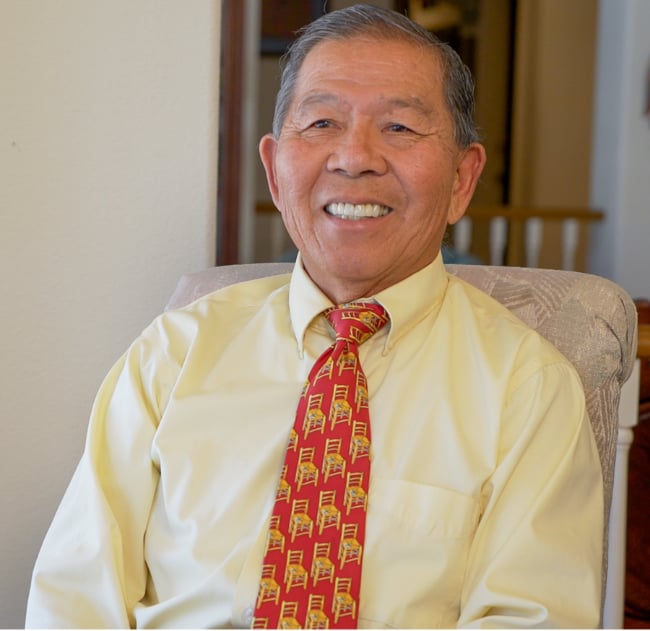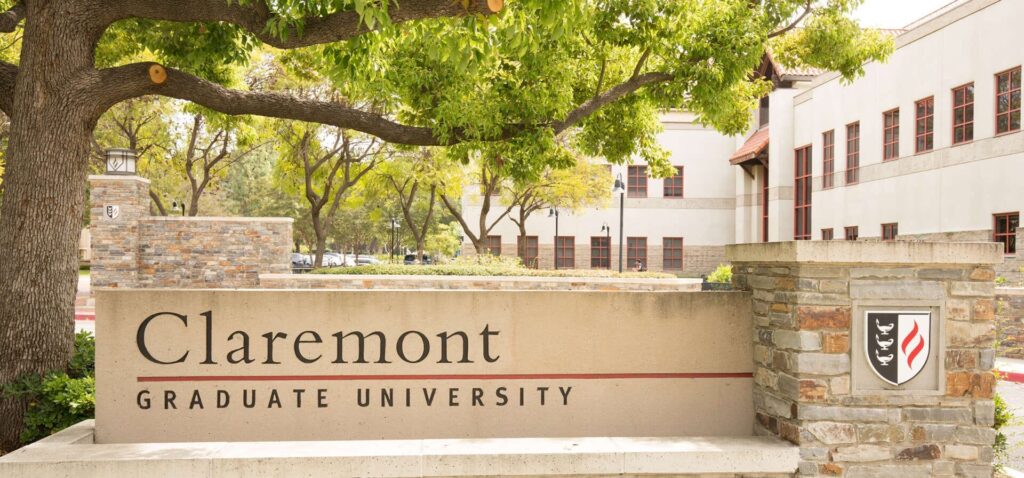2022 city council race profiles: Peter Yao

Peter Yao
by Steven Felschundneff | steven@claremont-courier.com
For people who have lived in Claremont for a while, the name Peter Yao will be very familiar. However, if one moved here in the last decade, his candidacy for city council might be something new.
Yao was first elected to the Claremont City Council in 2003, and reelected in 2007, during which time he served as mayor in 2007 and 2008. He has also served on numerous local boards, including Mt. San Antonio Gardens, the Claremont After School Program, and the Claremont Chamber of Commerce.
He has represented the city at several regional government agencies, including as the president of the Contract Cities Association, a board member at Tri-City Mental Health, a governing board member at the San Gabriel Valley Council of Governments and a committee member at the League of California Cities.
Yao left the council three months before the end of his second term so he could serve a 10-year stint on the California Citizens Redistricting Commission, which shaped the boundaries of political districts across the state as part of the once-every-10-year redistricting process.
Yao will be challenging incumbent Ed Reece in District 2, which encompasses the geographically northeast portion of town.
Asked why he wants his old job back, Yao said he felt there was some uncompleted business here in Claremont.
“When my term expired on the redistricting commission in 2020, I wanted to give it another try and finish the few tasks that I want to get to,” Yao said.
“The biggest issue on my mind is the underfunding of employee pensions. When I departed the council, I made a statement to the COURIER in 2010 that that would be the most serious issue the city had to address at that point in time. So, if I get back on the city council then I get a chance to try and address that.”
Yao said when he left the council the unfunded liability was around $5 million, but since then it blossomed to $60 million, and he fears with the terrible performance of the stock market that number could grow beyond $70 million perhaps to $80 million.
“And that is a big deficit that any city has to address. Finding the money to address that problem is going to involve some major decisions,” he said.
Yao has a three-pronged plan so that no entity will have to shoulder the bulk of the burden. First, the city council will have to make paying down the pension debt the highest priority when allocating expenditures in the annual budget. Next, city employees will have to transition from pensions into a defined contribution program like a 401k. Finally, the citizens of Claremont will probably need to approve a tax measure to cover a portion of the debt.
City Manager Adam Pirrie said during this year’s budget meeting that the city would be at parity by 2045 under the current system of required payments to CalPERS plus discretionary payments, coupled with California Public Employees Reform act, which will result in lower pension payments for new employees.
Yao thinks that scenario is too rosy.
“It all depends on how much you trust the data,” he said. “When you take a look at the growth of the underfunding that doesn’t give me a warm feeling that we are heading in the right direction.”
Yao says the pension defect grows exponentially each year and chipping away at it slowly won’t work, which is why he supports the more drastic steps.
“Based on my back of the envelope calculation, depending on that [parity under the current plan] happening is a very low probability,” he said.
His second priority if he returns to the council would be improving the “town and gown” relationship. He said that when visiting his sister in Princeton, New Jersey, from the time the plane touches down one knows they are in a college town, but in Claremont it feels like each party goes its own separate way.
“If you are in downtown Claremont you hardly notice that there are colleges in town. I think by working together in partnership, Claremont can distinguish itself among all the neighborhood cities in the Inland Empire and I think our economy as far as visitors would take a big jump,” Yao said.
With Larkin Place at the top of the news this summer, the COURIER asked Yao how he would have voted on the easement issue which was rejected by the council this summer.
“It’s a tough question to answer in that I was not privy to a lot of the earlier decisions. But over the last couple months I have talked to a lot of people, including a conversation with the director of Pilgrim Place. What I identified is the Larkin Place project was totally initiated by the city as early as 2016,” Yao said.
He said in the process of campaigning he learned between 75% and 80% of the people are not happy with the project.
“So, on that basis I reached the conclusion that the selection of the site is bad. But in my observations, the city never went through answering that question [of] what is the best site for the affordable housing project. They kind of jumped on the fact that this plot of land is available,” Yao said.
He would like to see the process rolled back so all the interested parties could work out a deal where an alternative location could be identified. Although he said it’s most likely too late to start over.
“If we go back a couple of steps and say, ‘What is the best land for the project?’ perhaps we will overcome some of the issues like a four-story building and being so close to a general-purpose park and so close to a retirement community and a junior high school.”
He proposed offering the Pooch Park on College Avenue as an alternate location because the property is larger and the density would be lower with the same number of units. He figures the two properties are of equal value so some type of trade could be reached. He suggested that the future residents of the permanent supportive housing might be able to use the community rooms at Jamboree’s Courier Place for gatherings. Of course, the Pooch Park is next to College Park where Claremont Little League competes and is less than a block from an elementary school.
Confronted with the high likelihood that Jamboree will build Larkin Place at is current location on Harrison, Yao said: “If everybody in the project is dead set on a single direction, that is where it’s going to go.
“The way I look at things, if we can come up with a win-win scenario, it will be cheaper to build for Jamboree, it’ll be less density, and I am confident we can address the three-story versus four-story issue. I am sure the temperature of the discussion will be lower,” Yao said.
On the subject of housing in general, Yao supports spreading affordable units in all parts of the city through the current Inclusionary Housing Ordinance, which requires new development over a certain size include 5% of units to be set aside for low-income occupants and 10% for those of moderate income.
“My thinking over all the years on affordable housing is that you should not try to focus in any one area, whether it’s south Claremont, north Claremont or anyplace else,” he said. “Over the last 15 years, 60 some [affordable] units have been built. I bet if you stop a resident on the street in Claremont, he or she would not be able to tell you where those units are, and that to me is a better way of addressing affordable housing than building a complex at one location.”
Yao had many other ideas he says will improve life in Claremont, including an update to the general plan. For more information on his platform, visit his website at peteryaoforcitycouncil.com.










0 Comments